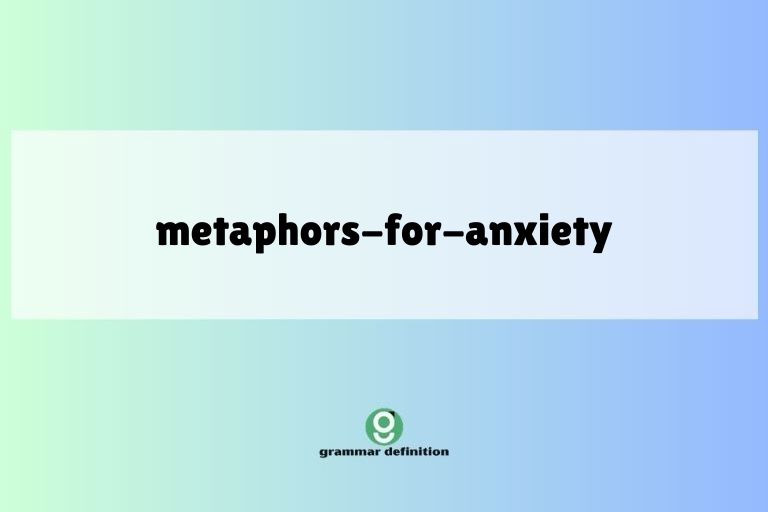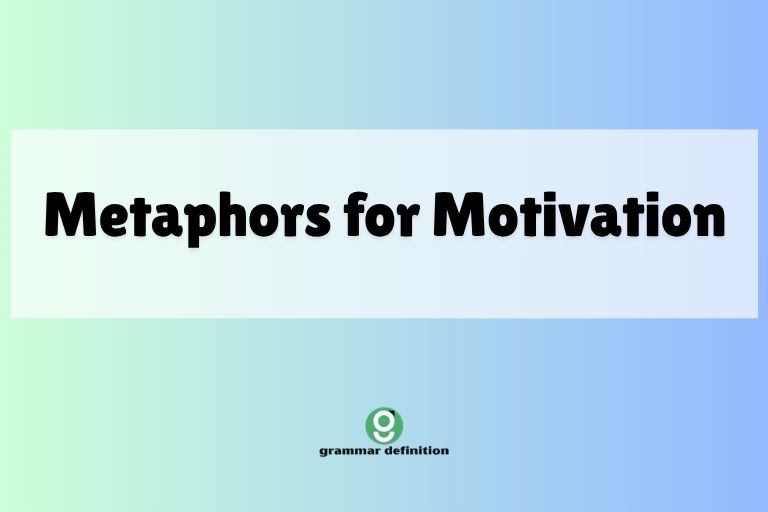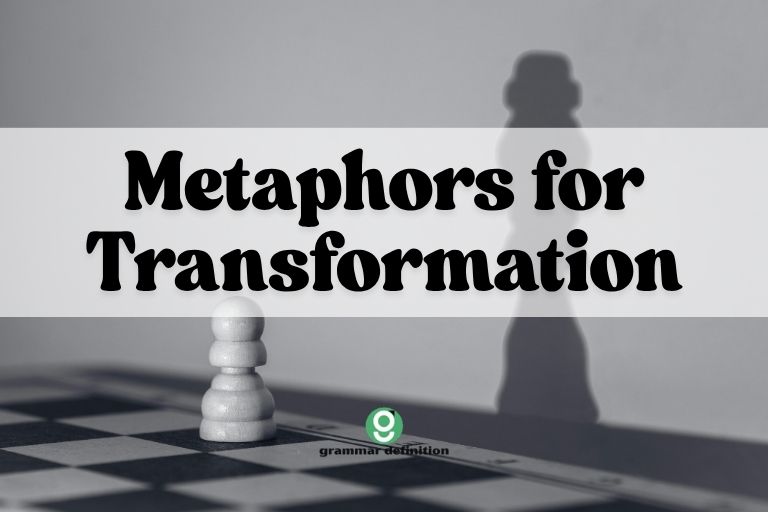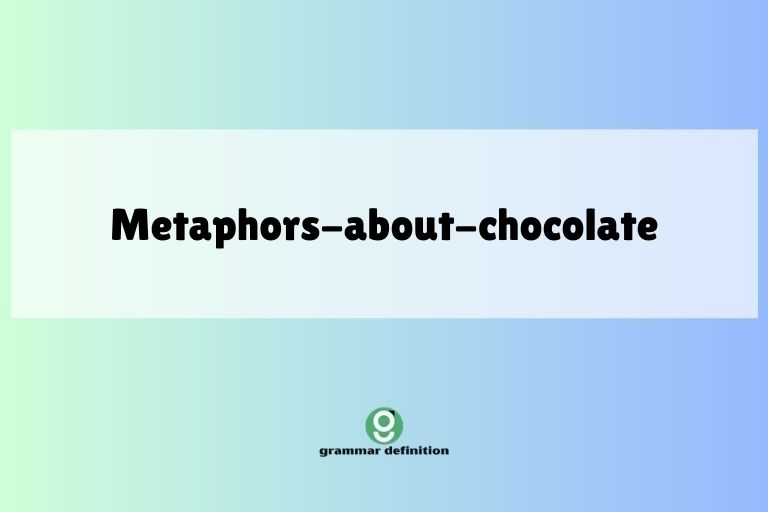Unleashed Language: Mastering Metaphors for Dogs
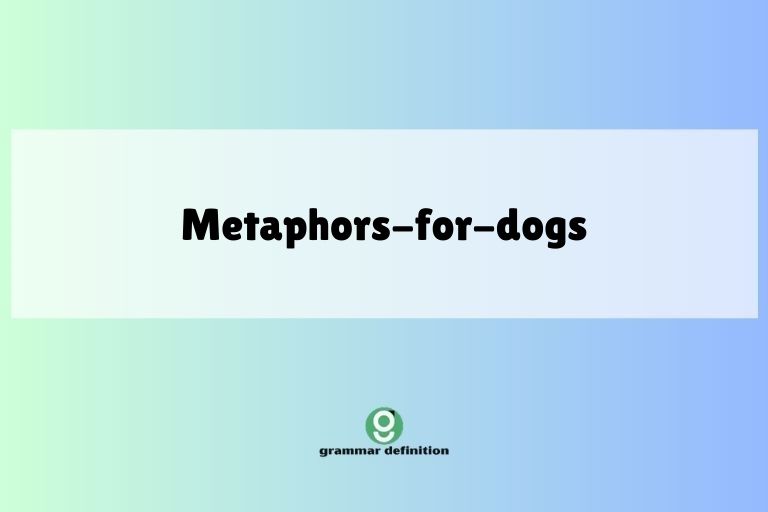
Metaphors are powerful tools in the English language, allowing us to understand abstract concepts by comparing them to something more concrete. When applied to our canine companions, metaphors can paint vivid pictures of their personalities, behaviors, and the unique bond we share.
Understanding metaphors for dogs enhances our descriptive abilities and deepens our appreciation for the nuances of language. This article explores the diverse world of dog-related metaphors, providing a comprehensive guide for English learners of all levels.
Whether you’re an ESL student, a creative writer, or simply a dog lover looking to enrich your vocabulary, this guide will equip you with the knowledge and skills to effectively use and interpret metaphors for dogs. We’ll cover everything from basic definitions to advanced techniques, ensuring you gain a solid understanding of this fascinating linguistic phenomenon.
Table of Contents
- Introduction
- Definition: What is a Metaphor?
- Classification of Metaphors
- Function of Metaphors
- Contexts for Using Metaphors
- Structural Breakdown of Dog Metaphors
- Types and Categories of Dog Metaphors
- Personality Metaphors
- Behavior Metaphors
- Appearance Metaphors
- Relationship Metaphors
- Examples of Metaphors for Dogs
- Personality Trait Examples
- Behavioral Examples
- Appearance Based Examples
- Relationship Dynamic Examples
- Breed Characteristic Examples
- Usage Rules for Dog Metaphors
- Appropriateness and Tone
- Clarity and Context
- Avoiding Clichés
- Common Mistakes with Dog Metaphors
- Literal Interpretation
- Mixed Metaphors
- Overuse of Metaphors
- Practice Exercises
- Exercise 1: Identifying Metaphors
- Exercise 2: Creating Metaphors
- Exercise 3: Correcting Metaphors
- Advanced Topics in Dog Metaphors
- Extended Metaphors
- Symbolism and Archetypes
- Cultural Differences in Dog Metaphors
- Frequently Asked Questions
- Conclusion
Definition: What is a Metaphor?
A metaphor is a figure of speech that directly compares two unrelated things, suggesting a likeness between them. Unlike similes, which use words like “like” or “as” to make a comparison, metaphors state that one thing *is* another. This creates a more vivid and impactful image in the reader’s mind. Essentially, a metaphor transfers qualities from one thing to another to create a new understanding.
For example, saying “My dog is a furry shadow” is a metaphor. It doesn’t mean the dog *literally* transforms into a shadow, but it suggests the dog’s constant presence and loyalty, mirroring the way a shadow follows a person.
This comparison enhances our understanding of the dog’s behavior and relationship with its owner.
Classification of Metaphors
Metaphors can be classified in several ways, including:
- Standard Metaphors: These are commonly used and easily understood (e.g., “time is money”).
- Novel Metaphors: These are original and creative, offering a fresh perspective (e.g., “the city is a concrete jungle”).
- Dead Metaphors: These are so overused that they’ve lost their metaphorical impact and are now considered idioms (e.g., “the heart of the matter”).
- Mixed Metaphors: These combine two or more inconsistent metaphors, often creating a confusing or humorous effect (e.g., “Let’s nip it in the bud before it snowballs”).
Function of Metaphors
Metaphors serve several important functions in language:
- Enhance Understanding: They make abstract concepts more concrete and relatable.
- Add Vividness: They create a more engaging and memorable image for the reader.
- Express Emotion: They can convey feelings and attitudes in a subtle and powerful way.
- Persuade and Influence: They can be used to sway opinions and shape perceptions.
Contexts for Using Metaphors
Metaphors are used in a wide range of contexts, including:
- Literature: Poetry, novels, and plays often use metaphors to create rich and layered meanings.
- Everyday Conversation: We use metaphors unconsciously in our daily interactions.
- Business and Marketing: Metaphors can be used to promote products, services, and ideas.
- Political Discourse: Politicians often use metaphors to connect with voters and frame issues.
Structural Breakdown of Dog Metaphors
A typical metaphor consists of two main elements: the tenor and the vehicle. The tenor is the subject being described (in this case, the dog), and the vehicle is the object or concept used to describe the tenor. The connection between them is the shared characteristic or quality.
For example, in the metaphor “My dog is a furry alarm clock,” the tenor is the dog, and the vehicle is an alarm clock. The shared characteristic is the dog’s ability to wake the owner up, either through barking, nudging, or other attention-seeking behaviors.
The metaphor works because it highlights this specific aspect of the dog’s behavior.
Understanding this structure helps in both creating and interpreting metaphors. By identifying the tenor and vehicle, you can analyze the intended meaning and appreciate the creativity of the comparison.
Types and Categories of Dog Metaphors
Metaphors for dogs can be categorized based on the aspect of the dog being described:
Personality Metaphors
These metaphors describe the dog’s character and temperament. Examples include: “My dog is a sunshine on a cloudy day,” or “He is a velvet tyrant, ruling the house with soft paws.” These metaphors aim to capture the essence of the dog’s personality.
Behavior Metaphors
These metaphors focus on the dog’s actions and habits. Examples include: “She’s a vacuum cleaner when it comes to dropped food,” or “He’s a four-legged tornado when he plays.” These metaphors highlight specific behavioral traits.
Appearance Metaphors
These metaphors describe the dog’s physical characteristics. Examples include: “His fur is a blanket of snow,” or “Her eyes are pools of melted chocolate.” These metaphors create visual images of the dog’s appearance.
Relationship Metaphors
These metaphors describe the bond between the dog and its owner. Examples include: “Our dog is the glue that holds our family together,” or “He’s my shadow, always by my side.” These metaphors emphasize the emotional connection.
Examples of Metaphors for Dogs
Here are some examples of dog metaphors, categorized for clarity:
Personality Trait Examples
The following table provides examples of metaphors that capture various personality traits commonly associated with dogs. Each metaphor aims to paint a vivid picture of the dog’s character.
| Metaphor | Explanation |
|---|---|
| My dog is a furry comedian. | The dog is playful and entertaining. |
| He’s a loyal sentinel, always watching over us. | The dog is protective and vigilant. |
| She’s a gentle giant, despite her size. | The dog is kind and docile, despite being large. |
| My dog is a four-legged therapist. | The dog provides emotional support and comfort. |
| He’s a furry ball of energy. | The dog is highly energetic and playful. |
| She’s a sunshine on a rainy day. | The dog brings joy and happiness. |
| My dog is a Velcro dog. | The dog constantly sticks by the owner’s side. |
| He’s a furry shadow, always following me around. | The dog is extremely loyal and follows the owner everywhere. |
| She’s a furry alarm clock. | The dog wakes the owner up every morning. |
| My dog is a social butterfly at the park. | The dog is friendly and interacts well with other dogs. |
| He’s a velvet tyrant, ruling the house with soft paws. | The dog gets his way through charm and cuteness. |
| She’s a furry diplomat, mediating between the kids. | The dog calms down arguments and tension in the household. |
| My dog is a furry Einstein. | The dog is intelligent and quick to learn. |
| He’s a four-legged comedian, always making us laugh. | The dog is unintentionally funny and entertaining. |
| She’s a cuddly teddy bear. | The dog loves to cuddle and is comforting. |
| My dog is a furry vacuum cleaner when food drops. | The dog quickly eats any food that falls on the floor. |
| He’s a furry Houdini, always escaping from the yard. | The dog is skilled at escaping from confined spaces. |
| She’s a furry detective, sniffing out every scent. | The dog has a strong sense of smell and loves to investigate. |
| My dog is a four-legged guardian angel. | The dog protects and watches over the family. |
| He’s a furry philosopher, always gazing thoughtfully. | The dog often looks as if he is contemplating deep thoughts. |
| She’s a furry stress ball, always there to cuddle. | The dog provides comfort and helps to relieve stress. |
| My dog is a furry ambassador of goodwill. | The dog is friendly and makes people feel welcome. |
| He’s a furry drill sergeant during walks. | The dog is energetic and keeps the pace quick during walks. |
Behavioral Examples
The following table provides examples of metaphors that describe specific behaviors exhibited by dogs. These metaphors help to illustrate the intensity or nature of those behaviors.
| Metaphor | Explanation |
|---|---|
| He eats like a furry garbage disposal. | The dog eats anything and everything. |
| She barks like a foghorn when someone approaches. | The dog has a loud and persistent bark. |
| He sleeps like a log after a long walk. | The dog sleeps soundly and deeply. |
| She greets me at the door like a furry missile. | The dog enthusiastically jumps and greets the owner. |
| He digs in the garden like a furry archaeologist. | The dog is persistent and thorough when digging. |
| She sheds fur like a snowstorm in summer. | The dog sheds a large amount of fur. |
| He chases squirrels like a furry heat-seeking missile. | The dog is determined and focused on catching squirrels. |
| She begs for treats like a furry con artist. | The dog is manipulative and charming when begging. |
| He plays fetch like a furry athlete. | The dog is skilled and energetic when playing fetch. |
| She protects her toys like a furry dragon guarding its treasure. | The dog is very possessive of its toys. |
| He follows scents like a furry bloodhound on a mission. | The dog is determined and focused when tracking scents. |
| She hides her bones like a furry pirate burying treasure. | The dog is secretive and careful when hiding bones. |
| He drinks water like a furry camel stocking up for the desert. | The dog drinks a large amount of water at once. |
| She chews on her toys like a furry beaver building a dam. | The dog is persistent and focused when chewing. |
| He runs in circles like a furry tornado. | The dog is energetic and runs around erratically. |
| She howls at sirens like a furry opera singer. | The dog has a loud and dramatic howl. |
| He nudges my hand like a furry reminder. | The dog gently reminds the owner for attention. |
| She wags her tail like a furry metronome. | The dog wags its tail rhythmically and enthusiastically. |
| He sniffs other dogs like a furry social investigator. | The dog is curious and thorough when sniffing other dogs. |
| She rolls in the grass like a furry comedian doing a routine. | The dog’s rolling in the grass is amusing and entertaining. |
| He jumps over puddles like a furry gymnast. | The dog is agile and graceful when jumping. |
| She barks at the mailman like a furry security guard. | The dog is protective and territorial towards the mailman. |
| He licks faces like a furry affection dispenser. | The dog shows affection by licking faces. |
Appearance Based Examples
The following table provides examples of metaphors that focus on the physical appearance of dogs. They aim to evoke vivid imagery through comparison.
| Metaphor | Explanation |
|---|---|
| His fur is a blanket of snow. | The dog has white, fluffy fur. |
| Her eyes are pools of melted chocolate. | The dog has warm, brown eyes. |
| His tail is a feathered plume. | The dog has a long, fluffy tail. |
| Her ears are velvet curtains. | The dog has soft, floppy ears. |
| His paws are furry snowshoes. | The dog has large, furry paws. |
| Her coat is a patchwork quilt of colors. | The dog has a multi-colored coat. |
| His nose is a cold, wet button. | The dog has a typical cold, wet nose. |
| Her teeth are tiny pearls. | The dog has small, white teeth. |
| His bark is a rusty hinge. | The dog has a rough, creaky bark. |
| Her whiskers are delicate antennae. | The dog has long, fine whiskers. |
| His legs are sturdy pillars. | The dog has strong, supportive legs. |
| Her fur is a golden waterfall. | The dog has long, flowing golden fur. |
| His eyes are shining gemstones. | The dog has bright, captivating eyes. |
| Her coat is a shadow on the ground. | The dog has a dark, sleek coat. |
| His ears are radar dishes, picking up every sound. | The dog has large, sensitive ears. |
| Her fur is a cloud of fluff. | The dog has soft, fluffy fur. |
| His tail is a happy flag, always waving. | The dog wags its tail constantly. |
| Her paws are velvet cushions. | The dog has soft, padded paws. |
| His nose is a black olive. | The dog has a small, black nose. |
| Her fur is spun gold in the sunlight. | The dog’s fur shines like gold in the sun. |
| His eyes are deep, dark wells. | The dog has mysterious, deep eyes. |
| Her coat is a river of silk. | The dog has a smooth, silky coat. |
| His ears are soft triangles. | The dog has triangular-shaped ears. |
Relationship Dynamic Examples
The following table provides metaphors that describe the relationship between a dog and its owner, highlighting the emotional connection and bond.
| Metaphor | Explanation |
|---|---|
| Our dog is the glue that holds our family together. | The dog strengthens the family bond. |
| He’s my shadow, always by my side. | The dog is constantly with the owner. |
| She’s the missing piece of our family puzzle. | The dog completes the family unit. |
| He’s the anchor that keeps me grounded. | The dog provides stability and comfort. |
| She’s my furry confidante. | The owner shares secrets and feelings with the dog. |
| He’s the furry comedian that keeps us laughing. | The dog brings humor and joy to the family. |
| She’s the warmth in our cold house. | The dog brings comfort and love into the home. |
| He’s my four-legged therapist. | The dog provides emotional support. |
| She’s the heartbeat of our home. | The dog is an essential part of the family. |
| He’s the loyal knight guarding our castle. | The dog protects the home and family. |
| She’s the furry sunshine that brightens our days. | The dog brings happiness and positivity. |
| He’s the silent listener who understands everything. | The dog is a good companion who listens without judgment. |
| She’s the furry reminder to enjoy the simple things. | The dog encourages the owner to appreciate life’s small pleasures. |
| He’s the fuzzy blanket that comforts us. | The dog provides warmth and comfort. |
| She’s the furry friend who always knows how to cheer us up. | The dog is a reliable source of comfort and joy. |
| He’s the furry guardian of our hearts. | The dog holds a special place in the owner’s heart. |
| She’s the furry alarm clock that starts our day with a smile. | The dog cheerfully wakes the owner up each morning. |
| He’s the furry shadow that never leaves our side. | The dog is always loyal and present. |
| She’s the furry angel watching over us. | The dog is a benevolent presence in the home. |
| He’s the furry magnet that attracts all the love. | The dog is lovable and brings people together. |
Breed Characteristic Examples
The following table provides metaphors that use breed-specific characteristics to enhance descriptions. These metaphors leverage common knowledge about certain breeds to create richer comparisons.
| Metaphor | Metaphor Explanation |
|---|---|
| He’s a Border Collie of boundless energy. | Referencing the Border Collie breed’s high energy levels. |
| She’s a Golden Retriever of unwavering loyalty. | Referencing the Golden Retriever breed’s loyal nature. |
| He’s a Bulldog of stubborn determination. | Referencing the Bulldog breed’s stubbornness. |
| She’s a Dachshund of surprising speed. | Referencing the Dachshund breed’s unexpected swiftness. |
| He’s a Greyhound of pure, streamlined power. | Referencing the Greyhound breed’s athleticism. |
| She’s a Chihuahua of surprisingly big personality. | Referencing the Chihuahua breed’s bold nature. |
| He’s a Saint Bernard of gentle strength. | Referencing the Saint Bernard breed’s gentle nature. |
| She’s a Poodle of surprising intelligence. | Referencing the Poodle breed’s intelligence. |
| He’s a Husky of untamed winter spirit. | Referencing the Husky breed’s affinity for cold weather. |
| She’s a Beagle of relentless curiosity. | Referencing the Beagle breed’s curious nature. |
| He’s a German Shepherd of unwavering protection. | Referencing the German Shepherd breed’s protective instincts. |
| She’s a Labrador Retriever of endless appetite. | Referencing the Labrador Retriever breed’s love of food. |
| He’s a Jack Russell of fearless spirit. | Referencing the Jack Russell breed’s fearless nature. |
| She’s a Pomeranian of fluffy confidence. | Referencing the Pomeranian breed’s confident demeanor. |
| He’s a Shiba Inu of independent nature. | Referencing the Shiba Inu breed’s independent character. |
| She’s a Great Dane of towering presence. | Referencing the Great Dane breed’s large size. |
| He’s a Rottweiler of misunderstood gentleness. | Referencing that, despite their reputation, Rottweilers can be gentle. |
| She’s a Corgi of stubby-legged charm. | Referencing the Corgi breed’s short legs and charm. |
| He’s a Dalmatian of spotted enthusiasm. | Referencing the Dalmatian breed’s spotted coat and enthusiasm. |
| She’s a Newfoundland of water-loving rescue instincts. | Referencing the Newfoundland breed’s love of water and rescue abilities. |
Usage Rules for Dog Metaphors
Using metaphors effectively requires attention to detail and an understanding of their nuances.
Appropriateness and Tone
Consider the context and audience when using metaphors. A playful metaphor might be suitable for a casual conversation, but a more serious or formal setting may require a more subtle approach.
Ensure the metaphor aligns with the overall tone and purpose of your communication.
Clarity and Context
A good metaphor should be clear and easily understood. Provide sufficient context to ensure the reader or listener can grasp the intended meaning.
Avoid metaphors that are too obscure or require specialized knowledge.
Avoiding Clichés
While standard metaphors can be useful, avoid overusing clichés. Strive for originality and creativity in your comparisons.
A fresh and unexpected metaphor can have a much greater impact.
Common Mistakes with Dog Metaphors
Several common mistakes can detract from the effectiveness of metaphors.
Literal Interpretation
One common mistake is interpreting a metaphor literally. Remember that metaphors are figurative language, and their meaning should be understood in a symbolic sense.
For example, if you say “My dog is a furry alarm clock,” it doesn’t mean the dog literally functions as an alarm clock, but rather that it wakes you up consistently.
Mixed Metaphors
A mixed metaphor combines two or more inconsistent metaphors, creating a confusing or nonsensical image. For example, “Let’s grab the bull by the horns and nip it in the bud” combines two conflicting idioms.
Avoid mixing metaphors to maintain clarity and coherence.
Correct: Let’s grab the bull by the horns.
Correct: Let’s nip it in the bud.
Incorrect: Let’s grab the bull by the horns and nip it in the bud.
Overuse of Metaphors
While metaphors can enhance your writing and speech, avoid overusing them. Too many metaphors can make your communication sound forced or artificial.
Use metaphors sparingly and strategically to maximize their impact.
Practice Exercises
Test your understanding of dog metaphors with these exercises:
Exercise 1: Identifying Metaphors
Identify the metaphors in the following sentences:
| Question | Answer |
|---|---|
| 1. Her dog’s bark was a rusty hinge swinging in the wind. | a rusty hinge swinging in the wind |
| 2. My dog is a furry vacuum cleaner when food hits the floor. | a furry vacuum cleaner |
| 3. He runs like the wind. | like the wind |
| 4. The puppy’s eyes were sparkling jewels. | sparkling jewels |
| 5. My old dog is an island of calm in our hectic house. | an island of calm |
| 6. Our golden retriever is pure sunshine on a cloudy day. | pure sunshine |
| 7. He gulps down food like a bottomless pit. | a bottomless pit |
| 8. My dog is a four-legged shadow, always following me around. | a four-legged shadow |
| 9. The husky’s howl was a mournful symphony. | a mournful symphony |
| 10. Her dog is a furry diplomat, mediating family arguments. | a furry diplomat |
Exercise 2: Creating Metaphors
Create a metaphor for each of the following descriptions:
| Description | Possible Metaphor |
|---|---|
| 1. A dog that is very energetic. | A furry ball of lightning. |
| 2. A dog that is very lazy. | A furry couch potato. |
| 3. A dog with a loud bark. | A canine foghorn. |
| 4. A dog that loves to cuddle. | A warm, furry blanket. |
| 5. A dog that is very loyal. | A four-legged shadow. |
| 6. A dog who eats very quickly. | A furry black hole. |
| 7. A dog who is very protective. | A canine bodyguard. |
| 8. A dog who sheds a lot. | A walking snowstorm. |
| 9. A dog who is very intelligent. | A furry Einstein. |
| 10. A dog who is always happy. | A sunshine with paws. |
Exercise 3: Correcting Metaphors
Identify and correct the mixed metaphors in the following sentences:
| Question | Corrected Sentence |
|---|---|
| 1. We need to nip this problem in the bud before it snowballs down the rabbit hole. | We need to nip this problem in the bud before it gets out of control. |
| 2. He’s burning the candle at both ends while juggling all the balls in the air. | He’s burning the candle at both ends to get everything done. |
| 3. She sailed through the presentation and hit a home run with flying colors. | She sailed through the presentation with flying colors. |
| 4. The project is a long shot, but we need to grab the bull by the horns and run with it. | The project is a long shot, but we need to give it our best effort and run with it. |
| 5. Let’s put all our eggs in one basket and think outside the box. | Let’s think outside the box to find a creative solution. |
| 6. He’s skating on thin ice while walking on eggshells. | He’s skating on thin ice with his risky behavior. |
| 7. We need to get all our ducks in a row before we cross that bridge when it burns. | We need to get all our ducks in a row before we start. |
| 8. She’s climbing the ladder of success while keeping her head above water. | She’s climbing the ladder of success through hard work. |
| 9. We need to bite the bullet and open that can of worms. | We need to bite the bullet and face the difficult situation. |
| 10. Let’s test the waters and jump the gun. | Let’s test the waters before making a decision. |
Advanced Topics in Dog Metaphors
For advanced learners, here are some more complex aspects of dog metaphors:
Extended Metaphors
An extended metaphor is a metaphor that is developed over several lines or paragraphs. This allows for a more detailed and nuanced comparison.
For example, an extended metaphor could compare a dog’s life to a journey, exploring various aspects of the journey in relation to the dog’s experiences.
Symbolism and Archetypes
Dogs often serve as symbols of loyalty, friendship, and protection. Understanding these symbolic meanings can add depth to your use of dog metaphors.
For example, using a dog metaphor to describe a person might suggest that the person possesses these qualities.
Cultural Differences in Dog Metaphors
The perception of dogs can vary across cultures. In some cultures, dogs are revered as sacred animals, while in others, they are viewed as unclean or undesirable.
Be mindful of these cultural differences when using dog metaphors, as they can impact the interpretation and reception of your message.
Frequently Asked Questions
Here are some frequently asked questions about metaphors for dogs:
- What is the difference between a metaphor and a simile?
A metaphor directly compares two unlike things, stating that one thing *is* another (e.g., “My dog is a furry alarm clock”). A simile uses “like” or “as” to make a comparison (e.g., “My dog is *like* a furry alarm clock”).
- How can I avoid using clichéd dog metaphors?
Strive for originality by focusing on specific and unique qualities of the dog you are describing. Consider the dog’s personality, behavior, and appearance, and look for fresh and unexpected ways to compare them to other things.
- Is it okay to mix metaphors when describing dogs?
It’s generally best to avoid mixed metaphors, as they can be confusing and detract from the clarity of your message. However, in some cases, a mixed metaphor can be used intentionally for humorous effect.
- How do cultural differences affect the interpretation of dog metaphors?
Cultural perceptions of dogs can vary widely. In some cultures, dogs are seen as symbols of loyalty and friendship, while in others, they may be viewed negatively. Be mindful of these differences when using dog metaphors, and consider your audience’s cultural background.
- Can metaphors be used to describe any aspect of a dog?
Yes, metaphors can be used to describe virtually any aspect of a dog, including its personality, behavior, appearance, and relationship with its owner. The key is to find a creative and meaningful comparison that captures the essence of what you are trying to convey.
Conclusion
Metaphors offer a rich and expressive way to describe dogs, capturing their unique personalities, behaviors, and the special bond they share with humans. By understanding the principles of metaphor, exploring different types and categories, and avoiding common mistakes, you can effectively use dog metaphors to enhance your communication and deepen your appreciation for these beloved animals.
Whether you’re a writer, a speaker, or simply a dog lover, mastering the art of dog metaphors will add a new dimension to your understanding and expression.

